Mean Reversion Trading Strategy with a Sneaky Secret
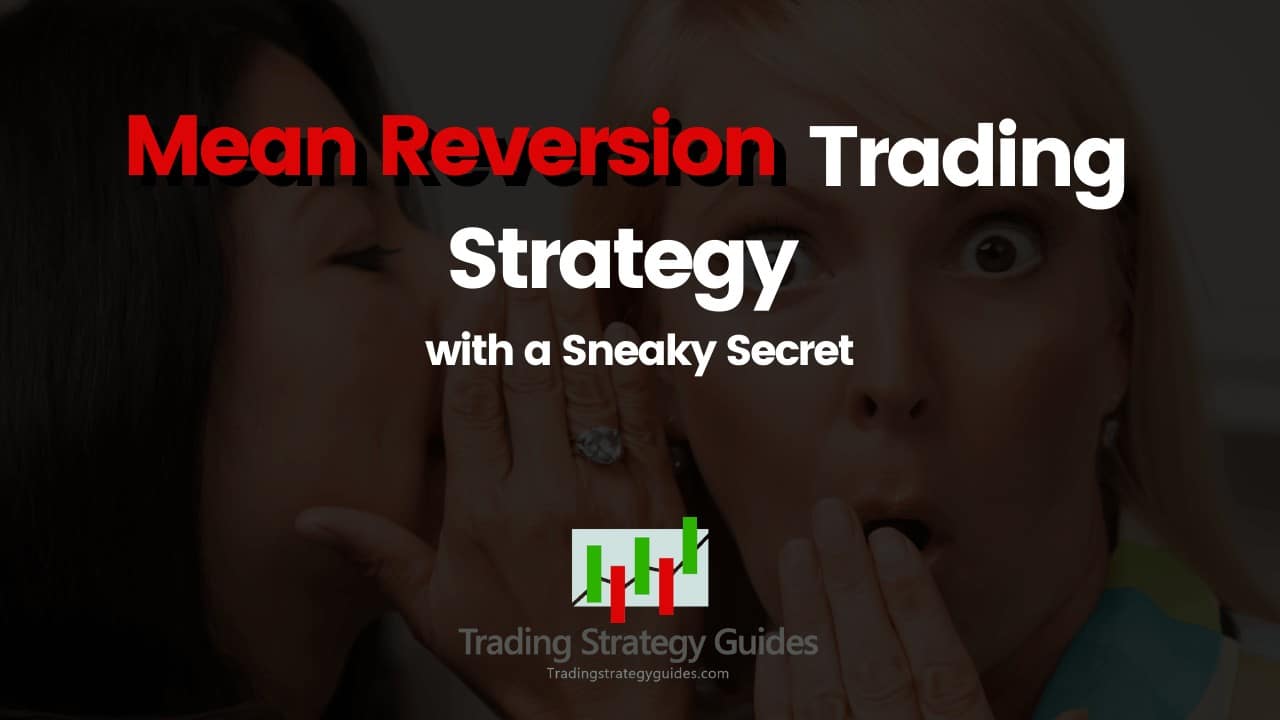
In this guide, you’ll learn a mean reversion trading strategy with some trading secrets that will assist you to limit the downside. The first part of the guide will highlight what is mean reversion trading, while in the second part we’ll reveal the mean reversion strategy and how you can fine-tune it to fit your personality.
If this is your first time on our website, our team at Trading Strategy Guides welcomes you. Make sure you hit the subscribe button, so you get your Free Trading Strategy every week directly into your email box.
If you are completely new to trading, check out our ultimate guide to understanding markets!
The mean reversion trading systems are more appealing to a lot of traders because it tends to have a higher win rate as opposed to the trend following strategies. Even when the markets are in well-established trends, mean reversion happens quite often.
So, there are more opportunities to profit from mean reversion trading.
Let’s get the ball rolling and start with the basics by first explaining what is mean reversion in trading then we’re going to reveal 5 trading principles that can be used with the mean reversion strategy.
See below:
What is the Mean Reversion Trading Strategy?
Put it simply; mean reversion trading assumes that over time the prices of any asset (stock, commodity, FX currency or cryptocurrency) in time will revert back to the mean or average price.
In other words, reversion to the mean trading comes down to the old saying:
“What goes up must come down.”
The mean reversion theory is at the foundation of many trading strategies that involve buying and selling of those asset class prices that have deviated from their historical averages. The idea is that in the long-term prices will return back to their previous average prices and normal pattern.
Example of mean reversion trading strategies includes:
- Reversals.
- Pullback trading.
- Retracement.
- Range trading system.
- Overbought and oversold strategies.
Our best mean reversion strategy is to trade those price ranges that occur after a severe price markup or markdown. In this case, reversion to the mean implies trading around the middle of the range as our average price.
In essence, mean reversion is playing around a central value be it the middle of the range, or a moving average, or however you wish to express it.
The reversion to mean trading system tends to produce a higher win rate in those instances where we can notice extreme changes in the price.
We can measure extreme price changes relative to the time frame used.
Obviously, there is also a probability that the price will not revert back to its mean. This can indicate that there is a real shift in the market sentiment and we’re in a new paradigm.
Now that we know what is mean reversion trading, let’s see how the mean reversion regression works.
See below:
How Does the Mean Reversion Trading Strategy Work?
With mean reversion, we’re looking to trade against the heard.
A lot of the times when you’re doing mean reversion trading, you’ll be quick in-and-out of a trade. That’s why day trading mean reversion strategy works better.
There are other different ways to trade with the mean reversion strategy, including:
- Price stretch from a simple moving average strategy.
- A break outside the Bollinger Bands strategy and a return back to the mean.
- A test of support and resistance strategy while the price is consolidating.
In the chart below we outline a regression channel, where the middle line is the linear regression. The middle line is simply the average price going from the initial point we used to draw the channel till the end.
The linear regression is clearly slopping upwards and it’s acting as a magnet to the price. Each time the price deviates from the average price line it snaps back to it outlining the reversion to the mean concept.
The main advantages of the mean reversion strategy include:
- Effective exit strategy – the take profit target is always the average price.
- High win rate – the shorter the mean reversion time frame used the higher the win rate.
- Good risk-adjusted returns.
All trading strategies have their own pros and cons.
The biggest flaw is that once you’re in a trade you’ll often see first a loss before you see a profit.
The main components of the mean reversion strategy should include:
- Entry signal after the price has moved away from its average price. You can simply calculate how far away percentage-wise are from the mean or use an ATR strategy multiple declines or simply use a volume oscillator to gauge oversold/overbought readings.
- Exit signal gives you a way out once you get into a trade.
- Broad market timing.
Moving on…
Let’s examine some of the main factors why mean reversion trading works.
See below:
Why Does the Mean Reversion Trading Strategy Work?
Mean reversion is a key element part of how all financial markets work.
Mean reversion happens because the prices have a tendency to overshoot and undershoot their intrinsic value. These “price anomalies” happens because the impact of new information that hits the market takes time to be digested by the market.
The market participants will take some time to understand the new information as the information is filtered slowly. Additionally, it takes time for the market to establish a fair value.
Secondly, mean reversion trading also works because prices also move based on collective emotions.
What this means for traders is that the price tends to overshoot to the downside a bit more than they overshoot to the upside. This is true because fear tends to be a bigger emotion than greed.
Let’s put the puzzle pieces together and construct our reversion to the mean trading strategy.
See below:
Mean Reversion Trading Strategy
The best mean reversion strategy you can possibly use is the one that can help you capitalize on choppy or ranging markets. During a consolidation period, the price will get stretched to the upside and downside multiple times. The price will tend to snap back from these overbought/oversold readings.
To properly identify mean reversion setups you need to use the right technical indicators.
There are a variety of indicators that calculate in some form or other extreme and unusual price movements.
With mean reversion trading, it’s critical to time the market.
So here are some of the most popular tools you can use to time the market:
- RSI indicator can be used to spot extreme overbought price readings.
- Standard deviation, Bollinger Bands, Money Flow and moving averages can be used to spot extreme price movements.
- Ichimoku Cloud strategy, which is based upon the price deviation from the cloud.
As an example, see the forex chart below:
The ranging period starting from August through November has generated 4 sell signals and 3 buy signals, which all eventually reached their target. The profit target in this case is the middle band.
Next, we’re going to show you a classic method to reduce your drawdown trading.
Usually, the mean reversion trading strategy has a low DD, but that can be reduced even further.
Best Mean Reversion Strategy:
Before we get to that point, first and foremost, let’s see what tools we need to use for this strategy.
The best mean reversion indicator that works 85% of the time is the RSI indicator.
So, you will need the RSI oscillator on your charts.
Now, there is one more important thing that needs to be done. The RSI settings must be changed from the default 14-period to 2-period RSI. So, we’re having not just any type of RSI, but a very fast RSI.
The other technical indicators we’re going to deploy on the charts are:
- 10-period simple moving average.
- 200-period moving average.
Your chart should look similar to the one below:
Note* Another thing to keep in mind is the recommended time frame is the daily chart. Intraday charts won’t work because the fast-period RSI will generate a lot of false signals on lower time frames.
Now, let’s see how we can combine the 3 indicators into a profitable mean reversion strategy.
The first obvious question is when to buy and sell currency.
To answer this question the mean reversion trading strategy needs to satisfy 3 triggers:
- The price needs to be above the 200-day EMA. This means that the overall price is in an uptrend so, we’re only going to look for buy signals in bull markets.
- Second, we look for the price to below the 10-day SMA, which shows a deviation from its mean.
- Last but not least, we look at the RSI to overshoot below 10, which signals that we’re in oversold territory.
Note* For sell signals use the same trading rules but in reverse.
See the forex chart below:
Once all 3 conditions are satisfied we enter a trade at the open of the following day.
Once we’re in a trade we also need, we also need to know when to exit the market. This is where the 10-period simple moving average comes into play again. What we’re looking for is for the price to reverse back to the 10-period SMA strategy.
More often than not the price will overshoot to the upside and break above the 10-period SMA.
So, to fully capitalize on the entire move we use multiple take profit targets:
- The first profit target is to cash half of the position once we touch the 10-period SMA.
- The second portion of your position is left until we break and close above the 10-period SMA.
Based on our backtesting result, on average your trades should reach the second target within 1-3 days. The longer you keep your position open, the lower the chances of the trade to succeed. As a general rule, you should cash out of your entire position within the first 3 trading days.
Now, we have left out for last the most important part, which is managing risk.
When it comes to the protective stop loss we’re advising not to place a stop loss right away, but instead, use a time stop.
Let me explain…
Based on our backtesting results we have found that a lot of the times the market will do a false breakout below the previous day low (high) and hurt our position.
So, to avoid this scenario we have found a great trick to move around it.
Our rule is very simple:
If by the first half of the day our position shows a loss, we close that trade and call it a day.
This is a risky play but we have the edge on our side to play this kind of trick. After all, trading is a risky game and everyone needs to decide for themselves how to manage risk.
Final Words – Best Mean Reversion Trading Strategy
In summary, the most alluring thing about mean reversion trading is the high win-loss ratio and the simplicity behind it. One thing to keep in mind is that the mean reversion strategy tends to perform poorly when the market is in a hard-mode trend. But that shouldn’t be much of a big deal since the market is ranging 75% of the time.
The key takeaways from the mean reversion trading strategy are as follow:
- Mean reversion can be used with all asset classes (stocks, commodities, currencies or cryptocurrencies).
- Range trading and overbought/oversold signals work the best with this method.
- Adjust the RSI settings to a fast-period.
- You can generate quick profits – short holding time periods.
- A trading tip – use a time stop instead of a price stop.
Thank you for reading!
Feel free to leave any comments below, we do read them all and will respond.
Interested in learning how to use stop-loss orders to manage your exposure to risk? Click here.
Check out Tim Black’s training on the Mean Reversion Trading Strategy in the video below!


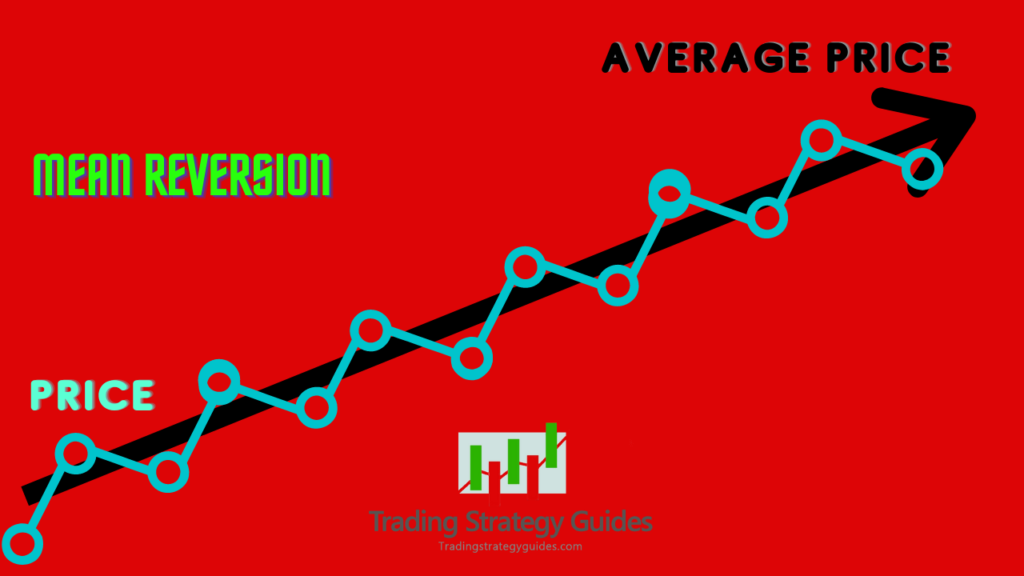
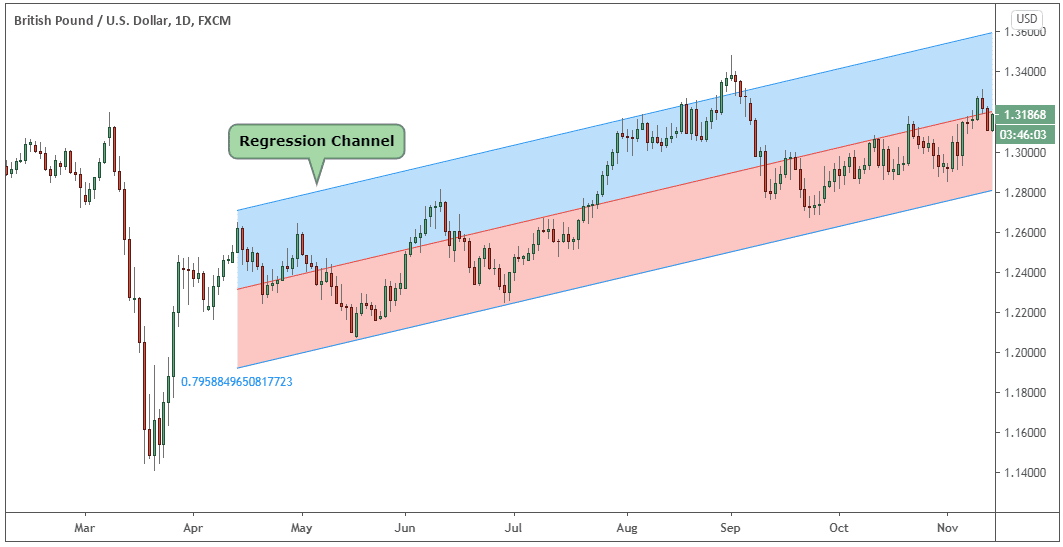

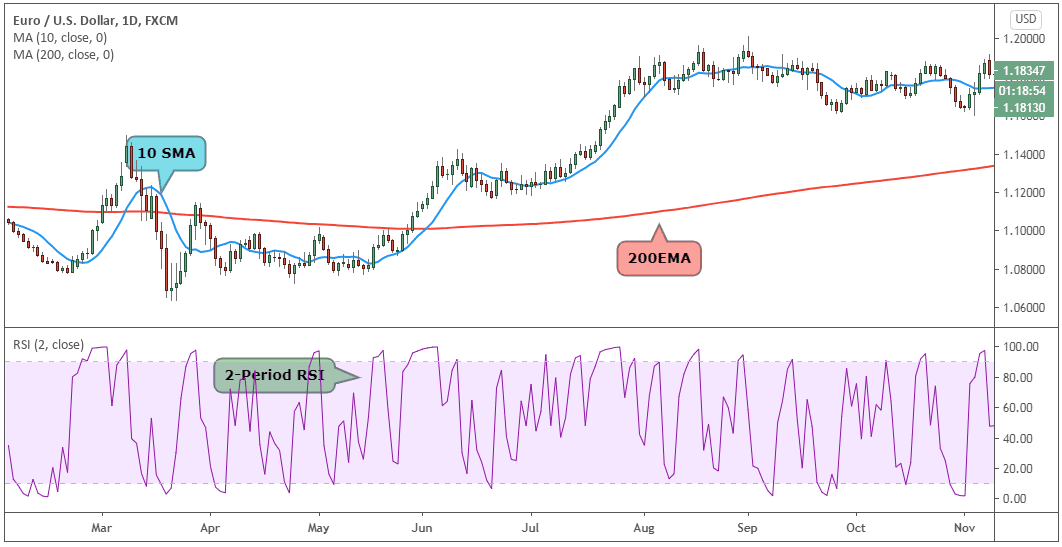
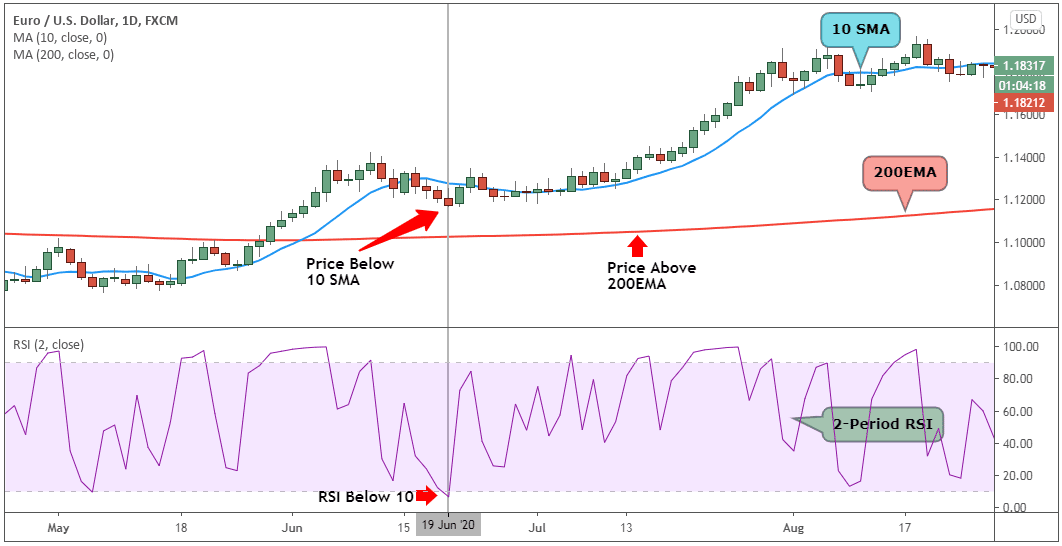
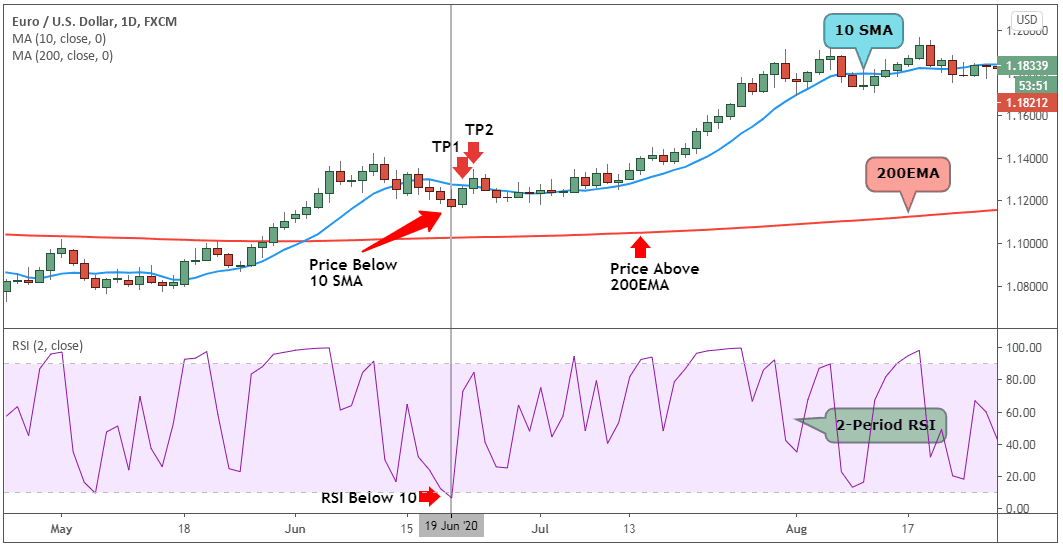





How to position size for this Strategy without a definite stop loss?
(% of trades won x ave size of win) x 2
It’s the first time I’ve seen the RSI indicator being used 🙂
Hope you enjoyed it!